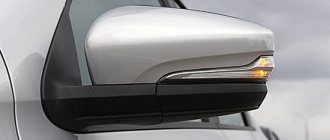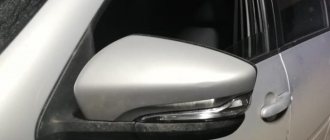04 March 2015 Lada.Online 57 906 15
In October 2011, serial production of the Lada Granta sedan began on the AVTOVAZ assembly line in Tolyatti. After this, the assembly opened in Izhevsk. Later, a new car body called “liftback” was introduced. Its production was launched at IzhAvto. Where are Lada Grantas produced at the moment?
You can track the assembly location of the Lada Grant using the following chronology:
- On May 16, 2011, the assembly of the Lada Granta sedan began in Tolyatti.
- Since mid-2012, production of the Lada Granta sedan was opened at OAG LLC in Izhevsk (IzhAvto).
- On May 14, 2014, serial production of the Lada Granta Liftback began at IzhAvto, and the production of sedans ceased.
- Starting from 2015, the production of Lada Granta is planned to be completely transferred from Izhevsk to Tolyatti.
- In March 2022, the production of the liftback was transferred from Izhevsk to Tolyatti.
- Since 2022, the new Granta has been produced in addition to Togliatti at Chechenavto (instead of Priora).
Assembly Features
The peculiarities of the Granta assembly are that, almost for the first time in the modern history of the brand, a fully automated and robotic assembly line was used, on which little depends on humans. The line was fully equipped with modern welding robots. Since checking the geometry of the finished body was completely entrusted to automatic control systems, the quality of the final product increased significantly. Since then, the gaps on Lada Granta bodies have been smooth, without distortions.
A distinctive feature is also the high-quality anti-corrosion treatment. It is especially good on the Sport version, which, according to the manufacturer, is distinguished by its particularly durable body.
In addition, this Lada model uses a large number of high-quality imported components. Due to this, the management of the enterprise was able to significantly increase the reliability of finished machines. Unfortunately, this approach did not take long to affect the cost. Thus, the Standard package today costs almost 400 thousand rubles, and the cost traditionally continues to rise.
However, the quality of cars is also growing, and AvtoVAZ (something incredible!) has already recalled batches of cars several times to eliminate identified defects.
Is the “packaged” Lada Granta worth the money?
LADA > Granta
Facelift, configurations and prices
No one expected miracles from a budget car for three hundred thousand, and no one received them.
Visually, the new Granta is still somewhat different from last year’s model due to a slightly modified front bumper, stampings on the sides and modified rear lights. It is difficult to judge the aesthetic value of such changes, and comparing them even with Korean state employees or the new Chinese is somewhat ridiculous.
Lada Granta liftback
Multimedia system with 7-inch touchscreen, navigation and Bluetooth support. Light and rain sensors, heated windshield, electric drives for all windows, climate control and even cruise control... Active safety is guarded by ABS, EBD (brake force distribution system) and ESC (exchange rate stability system). Passive airbags are provided by front airbags and three head restraints in the rear seat. Of course, there are such simple options as central locking, heated front seats and Isofix mounts in the rear. And yes, all this is a modest Lada Granta liftback, albeit in the top-end “Lux/Navigation” version. Until recently, such a car cost 571,200 rubles, but after the New Year’s revision of the price list, the price rose to 586,200 rubles. Agree, it’s damn tempting to get such a set of options at such a still attractive price. But is all this necessary in Grant?
Page 2
On May 11, 2022, AVTOVAZ launched the official promotional website of its new car Lada Granta.
Anyone interested in the new LADA Granta can easily watch the slide show and learn about the key features of the new product. So, on the pages of the new website you will find: the main points in the history of the Lada Granta, an official video review of the Lada Granta, information about the cost of the Lada Granta, photographs of the Lada Granta and the main advantages of the LADA Granta.
The promotional site also explains why the new Lada Granta is so cheap and provides detailed design features and technical characteristics of the Lada Granta.
Lada Granta Club publishes screenshots of all slide pages of the official LADA Granta promo website.
Lada Granta liftback
The Itelma multimedia system does not raise any unnecessary questions at first acquaintance: it has an adequate menu structure, tolerable performance and a normal touchscreen sensor. You just have to turn off the multimedia manually every time - it doesn’t “stall” along with the machine. Moreover, I don’t know why AVTOVAZ needed this head unit in the first place - after all, the Lada-Renault-Nissan alliance has access to the LG multimedia complex (this is installed on XRAY, Logan, Kaptur and Duster), which is superior to Itelma in both graphics and performance . Is Korean multimedia really more expensive?
Lada Granta liftback
The USB port located on the inside of the glove compartment leaves an unpleasant aftertaste. The uneven force on the “wings” of the climate control unit and the fittings from even earlier VAZ cars (admire the handbrake handle) are also frustrating. The abundance of silver was added: it is present on the panel elements and the shagreen plastic of the door handles. According to someone's good intentions, such a decision should have given the salon more solidity, but in fact it had the opposite effect. The interior of the Granta lags behind the exterior and every second reminds you that you are sitting in a very budget car.
Lada Granta liftback
But the back row pleased me. Despite the sloping roof, there is no less headroom here than in the Ravon Nexia sedan (aka the previous generation Chevrolet Aveo). Thus, even with a height of 185–190 cm, you can fit quite comfortably. Riding in the back won't cause any discomfort either, although Grant's shoulders feel a little tight. The same Renault Logan is noticeably more spacious in this sense. The Granta liftback makes up in part due to its spacious trunk. In pure volume, it is inferior to Loganov’s 4 liters (396 liters versus 400 liters - according to our measurements), but in terms of convenience it is many times superior. An assembled bicycle for an adult or fairly large household appliances can easily fit here.
Lada Granta liftback
Under the hood of our car is a 1.6-liter sixteen-valve engine with a power of 106 hp. I must say, the engine is good. If the robot had not wasted his talents, our liftback could easily be called one of the most dynamic cars in the class. Not in seconds, but in sensations. With all this, the Granta is very economical: actual fuel consumption was 7 liters of fuel on the highway and 8.5 l/100 km in the city. Part of the reason is that the car is quite light. Our measured curb weight is only 1097 kg. The main competitors are 50–100 kg heavier.
The second option is Hyundai solaris or Kia Rio
We really liked the Kia Rio and it suited us in all respects, except for one thing – cost. But the prices for Rio and Solaris were not much more than what we could afford.
There was a possibility that the manufacturers would organize some kind of action to support the fallen market and we would be able to fit into the budget. Out of pure curiosity, we went to the salon and inquired about promotions and all sorts of lucrative offers.
But, apparently, the Koreans were doing well with sales, and there was no need to stimulate demand.
After sighing, we discarded this option.
Lada Granta liftback
The energy intensity of Lada suspensions is beyond praise. Grant copes with broken asphalt and primers under the wheels no worse than Logan, whose suspension sings praises with amazing frequency. The only pity is that in terms of handling, the “Russian” is not up to par with its main competitors. There is much less feedback on the Granta's steering wheel than I would like. And even at decent speeds, the steering wheel is annoying with a frightening weightlessness. There are no questions about the effectiveness of the brakes, but not everyone will like the nonlinear force on the pedal.
Is this Grant worth the money? Everyone will answer this question for themselves. If a long list of options warms your soul, then why not? Yes - many of them do not work perfectly, but in general such a car has a right to exist. If you are interested in my opinion, I will never buy such a car for my family - fortunately, there are more than enough options even in this budget. For the same money you can buy a slightly more modest Grant (or Datsun) with a classic Jatco automatic transmission. Or you can refuse the automatic transmission, pay an additional 50 thousand rubles and buy something from the Volkswagen Polo - Hyundai Solaris - Kia Rio combination. With a manual transmission, a pair of airbags, simple air conditioning and front electric windows. This whole trio drives much more thoroughly, and each of these cars is made with great respect for its future owners. For me personally, these qualities are more important than the navigation system and cruise control. And for you?
Factories in Russia. How Granta liftback is made at the Izh-Avto plant
Izh-Avto is a full-cycle plant. This is how it was designed in the 1960s, and this is how it remained after a double bankruptcy with a change of owners. The plant in its current form is a monument to wastefulness and inept business planning of the SOK Group and Yuri Kachmazov personally, who first poured hundreds of millions of dollars into Izh-Avto for the project of assembling Kia cars, and then were forced to bring the enterprise to man-made bankruptcy. For which, by the way, the top management of SOK Group is still on the international wanted list.
In 2011, AvtoVAZ became the owner of the plant, through a rather cunning scheme with the personal support of Putin and Chemezov. VAZ bought the plant from Sberbank with a loan taken from Sberbank itself! And at a price many times lower than the real one. But these were the political realities of that moment. It would be very short-sighted for VAZ not to take advantage of this chance.
Now Izh-Auto assembles the Lada Granta in sedan and liftback versions. We already know that the presentation of the liftback took place quite recently, on May 14. And from June 1, this car will remain the only one on the assembly line; the sedan will be produced only in Tolyatti. But the liftback is only in Izhevsk.
We visited Izh-Avto on the eve of the presentation of the Granta liftback and saw how these cars are assembled.
As for the liftback, localization on Izh-Avto has already reached a significant level: all the original stamping of the rear part, many plastic parts, including the instrument panel. Moreover, the liftback is the only Grant that uses galvanized steel (the rear door, and rear wings will soon be added). The bodies are welded and painted right there at the factory. After which the process of assembling the car begins.
The Grant assembly process begins with bodies arriving from the paint shop into storage.
And from there they get to the first post of the main conveyor.
This place is called TRIM, which simply means conveyor, and its sections are designated, respectively, as TRIM 1, TRIM 2, etc. Here 240 people assemble the salon. The conveyor is floor-mounted, a metal belt moves in the center. There is not a single protrusion on the moving canvas, so it is absolutely safe here. And the speed is low.
Here is the body of the future Grant coming onto TRIM 1.
Here the doors are removed and go to a separate subassembly. A typical solution for a modern car plant, but strangely enough, new for Izh-Avto. When the Kia Spectra was produced here, it was assembled together with the doors.
The doors are hung on an overhead conveyor and transported to another location.
And the exposed body is preparing to receive the first parts of the interior.
First of all, additional bitumen vibration-damping linings are molded.
They are preheated in a special oven to 60 degrees.
Then the electrical wiring is installed.
A liftback requires more dexterity from assemblers than a sedan; here you have to assemble the rear door - run the wiring to the lights and windshield wiper. In addition, you must always take into account the equipment of a particular machine - the wiring there varies. For ease of installation, the door is held on a spacer.
To protect the thresholds, special soft pads are used, on which you can sit without fear.
Previously, covers were also used for the wings, but, according to factory workers, they were more trouble than they were worth: the magnets with which they were attached to the body scratched the paintwork more than the workers themselves.
To the left of TRIM, meanwhile, the formation of kit boxes (boxes with parts and hardware, in simple terms) is underway.
The kit boxes have a good configuration and fit perfectly above the central tunnel.
While the interior is being assembled, some people assemble the steering rack and attach tie rods with ends to it.
Another person mounts the rack in the engine compartment. This is where there used to be a fastening with a clamp on two studs.
But last year VAZ introduced a more rigid bolt fastening. Unfortunately, the studs and clamp were left on the right.
The conveyor, meanwhile, continues to move.
The ECU and foam footrest for the front passenger are mounted.
The wiring is being completed.
Now it's time for fiber sound absorbers. There are several types.
Those that are meant to simply lie on the floor are fixed with disgusting-looking resin.
But, of course, it is not visible under the mats.
The main soundproofing element is also installed here - a felt mat on the engine shield.
In the “Lux” the front sound absorber is different, composite.
When installing a seal in a doorway, one girl makes about 150 blows with a hammer!
Well, now you can install the molded floor carpet.
Pre-assembled instrument panel...
...installed manually by two strong workers.
In the future, Izh-Avto plans to do this with special manipulators, like at the same VAZ. The manipulators have already been purchased and installed in the right places on the conveyor, but the workers have not yet mastered them.
But we have mastered the installation of shock absorbers using a similar technology. First, next to the conveyor, the suspension struts are assembled.
Folds in a convenient place.
Then the racks are put on manipulators and brought to the attachment points on the body. Here's the front suspension:
And here's the back one:
While the suspension elements are being attached, let’s step aside to the instrument panel assembly area. They come from VAZ completely disassembled, in the form of a set of components. And the plastic case for some configurations is generally cast in Izhevsk.
The metal frame is mounted on a special stand.
And air ducts, a heater, electronics, and a housing are sequentially hung on it.
16 people cope with this task on a production scale.
Power units are being assembled nearby. The engine comes from the VAZ SME “naked”, without attachments. But with a catalytic collector.
The gearbox is also supplied separately.
On a small tabletop line, the engine is connected to the box and the missing electrical units.
This is an object of application of forces for 21 workers. There is no shame in taking a break during lunch break.
At the end of the line, the power unit takes on a complete look, even including wheel drives.
Since we have deviated from the main conveyor, let's go through this part of the workshop to the end. Moreover, this is where the fun begins.
The chassis section means that work with the car is carried out from below, therefore, the bodies are moved to an overhead conveyor.
The very first operation on chassis assembly is the installation of brake pipes with brake force regulators. That part of the braking system that is located in the engine compartment (brake booster, ABS, etc.) is already installed on TRIM.
So what is next…
Then a small ring conveyor begins. This is new equipment, it was purchased only this year. The power unit and rear beam assembly are installed on this annular section. Productivity - 30 cars per hour.
Power units are installed on the following pallets:
It turns out like this:
Behind, on the same pallet, the assembled rear beam is placed.
And the conveyor cart brings this thing directly under the body.
That's it, the “marriage” was successful.
Then the overhead conveyor continues its straight path, and the floor circular conveyor in contact with it continues its circular motion.
After the body has passed the ring conveyor, parts of the exhaust system and protective elements of the bottom are installed on it - thermal screens, lockers, plastic linings.
Intermediate final - installing wheels. To do this, the overhead conveyor is lowered as close to the floor as possible.
The wheels are screwed with a special multi-spindle wrench.
Now Granta looks like a real car!
And she’s on her way to the final section. Of course, the machine will not roll on its own; two moving belts are mounted on this section of the conveyor, exactly matching the track width.
At this point, they complete the assembly of the engine compartment - they connect the electrics, brakes, and all the pipes.
A good reason to evaluate the quality of some plastic parts. The edge of this overlay is very poorly processed, as if a drunken man had cut it off with a shoemaker’s knife. Yes, the part is hidden under the hood... But this is still an indicator of attention to the quality of a particular supplier.
Let's move on to installing the glass. High-tech reigns here.
A “primer” (primer) is manually applied to the small triangles of the side windows, along the perimeter of the black rim on the inside.
And the robot applies the sealant strictly along the designated contour and in the required dosage. A person can't do that.
The installer has a couple of minutes to insert the glass into the opening.
A similar technology is used for other glued glass - first a primer, then automatic application of mastic. Only there are significantly more robots here.
And at least two people have to handle the glass using suction cups: it’s heavy.
The same goes for the rear window.
The final polymerization of the sealing mastic occurs within 24 hours. During this period, it is not advisable to apply any force to the glass. For some insurance against displacement, the glass is fixed with tape.
Meanwhile, the conveyor continues its monumental flow.
Women decorate the trunks and put spare tires.
The stronger floor places windshield wipers and gas struts on the rear doors on the liftbacks.
And seats are brought into the cabin through the currently free openings.
Well, here we come to the place with the symbolic name “final 2”. Doors come here from their autonomous assembly area. The doors are removed from the conveyor.
And with the same manipulator they dock it to the body.
It's time to fill in all the liquid. First of all, engines are filled with coolant. This happens through a special connector.
The compressor is mounted in an interesting way: it takes liquid from stationary lines, and itself travels along the conveyor along the ceiling rail.
The body linings (moldings) are heated right there in the stove. They are mounted on double-sided tape, which has better adhesion when hot.
You can see the in-plant decoding of Grants configurations.
At the very last stage, the assembly and performance of selected components is monitored. For example, they check the wipers and scribers.
The car is inspected by the so-called check-men (controllers, in our opinion).
Then refueling with gasoline, shaking the suspension in a special area...
...and voila, another Grant goes to the storage tank.
From here they will take it to adjust the headlights and wheel alignment, but these are routine operations, we will not watch them.
The liftback grant for Izh-Avto has, in fact, been assembled since February. These were pilot batches; in total, about a hundred cars were made by the end of March. Production actually started in April, when 846 units were already produced. 800 of them immediately went to VAZ dealers.
Now the plant operates in two shifts - they switched to this schedule last year when they started making the Granta sedan. But the sedan is “leaving” Izhevsk; from June only the liftback will be produced here. This will be a “branded” model of the plant; there are no plans to assemble it in Tolyatti.
The assembly of the Nissan Sentra starts in August, of which 6,800 units are expected to be assembled by the end of the year. The Japanese are already testing production processes with all their might and have collected a decent number of test copies.
The total volume will thus be 72,000 vehicles. This is not much for such a large and modern plant, just to show break-even. It will be possible to think about profit only in 2015, when the Sentra sedan will be supplemented by the hatchback of the same name (in January) and the new generation Renault Logan (in June-July). A separate assembly line is now being set up for Renault, on the site of a completely destroyed old Soviet one. Behind this film, a second plant will soon “grow up.”
Izhevsk received a second... no, a third life. In February, the director was changed - Mikhail Ryabov, a former VAZ driver, became him. In general, Izh-Avto has become a normal assembly plant, without its own quirks and intentions to do something of its own, end-to-end. It's a pity? Don't know. The plant was not at the forefront of automotive progress even in Soviet times. In the new conditions, with the total dictate of the market with his own developments, he had no chance to survive. Probably better in the Alliance than in a coffin. Like AZLK.











